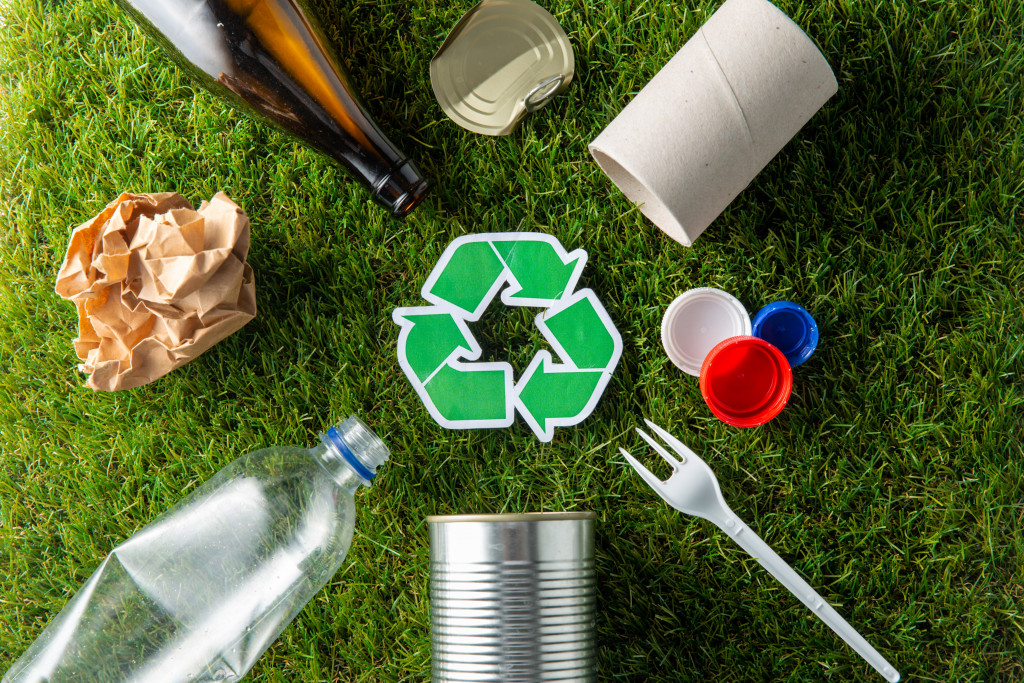The average person produces about four pounds of waste per day. This waste can come from various sources, including food, paper products, and plastic. According to the Environmental Protection Agency (EPA), about 75 percent of this waste is recyclable.
However, homeowners often decide to throw away those materials, unaware of the consequences. Recycling is important because it helps to reduce the amount of waste sent to landfills. When these materials get thrown away, they often end up in the ocean, where they can harm marine life. Additionally, recycling helps to conserve resources, such as water and trees.
There are many ways to recycle at home, but you must first understand what materials you can recycle before you act on them. Here are pieces of recyclable waste to consider recycling instead of throwing away.
Cooking Oil and Grease
Cooking oil and grease can be recycled, which may surprise some homeowners. They can turn into biodiesel, which serves as fuel for vehicles or generators. Additionally, recycling cooking oil and grease can help to reduce greenhouse gas emissions. As a result, recycling these household wastes can be a good thing.
Homeowners usually throw away used cooking oil and grease after cooking. They may pour it down the drain, which can cause problems for the plumbing system. Additionally, this waste can end up in landfills, where it can release harmful gases into the atmosphere.
To recycle your used cooking oil and grease, you should:
- Let it cool down before handling it.
- Pour it into a container with a lid.
- Take it to a local recycling center.
- Bring it to a restaurant that recycles cooking oil.
However, you might not want to perform cooking oil and grease recycling or travel to a far-away establishment to give it away. Fortunately, plenty of companies can provide cooking oil pick-up services. They will travel to your location to collect used cooking oil, and you can schedule them for a routine visit.
Plastic Containers

One familiar recyclable item homeowners often throw away is plastic containers. Plastic has a bad reputation because of the harm it creates to the environment. However, they are some of the most flexible materials in the world, and homeowners should consider recycling or repurposing them.
Homeowners can be flexible when it comes to recycling plastic containers. There are many ways to recycle them without harming the environment. For example, you can:
- Reuse them for food storage.
- Turn them into toys for children.
- Use them as organizers for your home.
There are many other ways to reuse and recycle plastic containers, but these are a few examples. If you are unsure how to recycle plastic containers, you can always check with your local recycling center or search online for recycling instructions. It will also be necessary to check for the specific type of material, as there are different guides for different types of plastic.
Electronic Devices
Most people don’t realize that they can recycle electronic devices and appliances. They often end up in landfills, where they can release harmful toxins into the air. Additionally, these devices can often be reused or repurposed.
There are many ways to recycle electronic devices and appliances. However, you must first understand what materials you can recycle before you act on them. Here are some examples of recyclable electronic devices:
-
Computer Monitors:
They contain lead and mercury, which can harm the environment if not disposed of properly. Recycling computer monitors help to reduce the amount of these toxins released into the atmosphere.
-
Televisions:
The appliance also contains lead and mercury. In addition, they often have plastic components that can release harmful chemicals into the environment if not recycled. Recycling televisions help to keep these toxins out of landfills and the ocean.
-
Mobile Phones:
Contain a variety of metals, including copper, aluminum, and gold. They also have circuit boards that contain harmful chemicals. Recycling mobile phones help to recover these valuable materials and keep them out of landfills.
To recycle your electronic devices, you can:
- Donate them to a local school or charity.
- Sell them online or at a garage sale.
- Take them to a local recycling center.
These are just a few examples of ways to recycle electronic devices. However, you should always check with your local recycling center for specific instructions.
Old Clothes and Carpets
Another common type of waste that homeowners throw away is old clothes and carpets. While most homeowners donate these items, they can still be part of landfills, often making up nearly 10% of their total volume.
There are many ways to recycle old clothes and carpets. However, you must first understand what materials you can recycle before you act on them. Here are some examples of recyclable materials:
-
Cotton:
Can be turned into new clothes, towels, or other textile products.
-
Polyester:
Can be recycled into new polyester products or turned into home insulation.
-
Wool:
Can be recycled into new wool products or used as home insulation.
However, recycling is not your best option. Here are a few alternatives to getting rid of used clothes or carpets:
- Donate them to a local charity.
- Sell them online or at a garage sale.
- Repurpose them as rugs or cleaning materials.
Conclusion
People are responsible for a lot of waste. Fortunately, there are many ways to recycle or repurpose everyday household items. It helps to reduce the amount of waste sent to landfills each year. It also helps to protect the environment from harmful toxins and chemicals.

